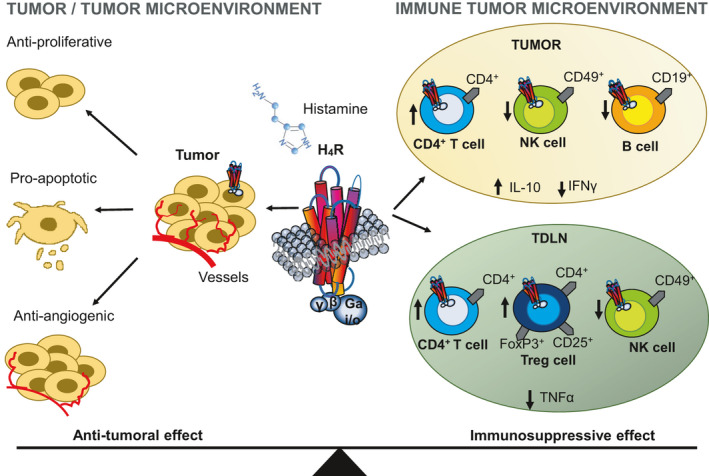FIGURE 2.

Effect of H4 receptor activation in tumor cells and the tumor microenvironment (TME). Histamine or selective H4 receptor agonists play important roles at a variety of stages during tumor development and in multiple cell types including cancer and immune cells. On the one hand, H4 receptor activation exerts a direct in vitro cytotoxic effect on TNBC cells, whereas on the other the H4 receptor selectively affects the distribution of different immune cell populations in the TME, modulating the local and systemic immune responses. In a TNBC murine model, H4 receptor stimulation increases the percentage of CD4+ tumor‐infiltrating T cells, whereas it decreases the infiltration of NK cells and CD19+ B lymphocytes. In addition, it increases IL‐10 secretion levels, whereas decreases IFNγ levels in tumor‐conditioned medium from wild‐type (WT) mice. Likewise, tumor draining lymph nodes (TDLN) of WT mice show higher proportions of CD4+ T cells and T regulatory cells (CD4+ CD25+ FoxP3+), a reduced percentage of NK cells, and decreased TNFα levels in TDLN compared with H4 receptor‐KO mice, thus suggesting an immunosuppressive effect of H4 receptor114, 149
